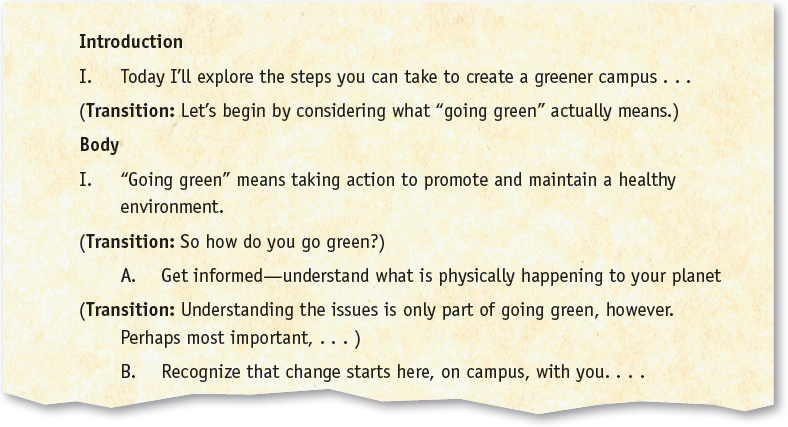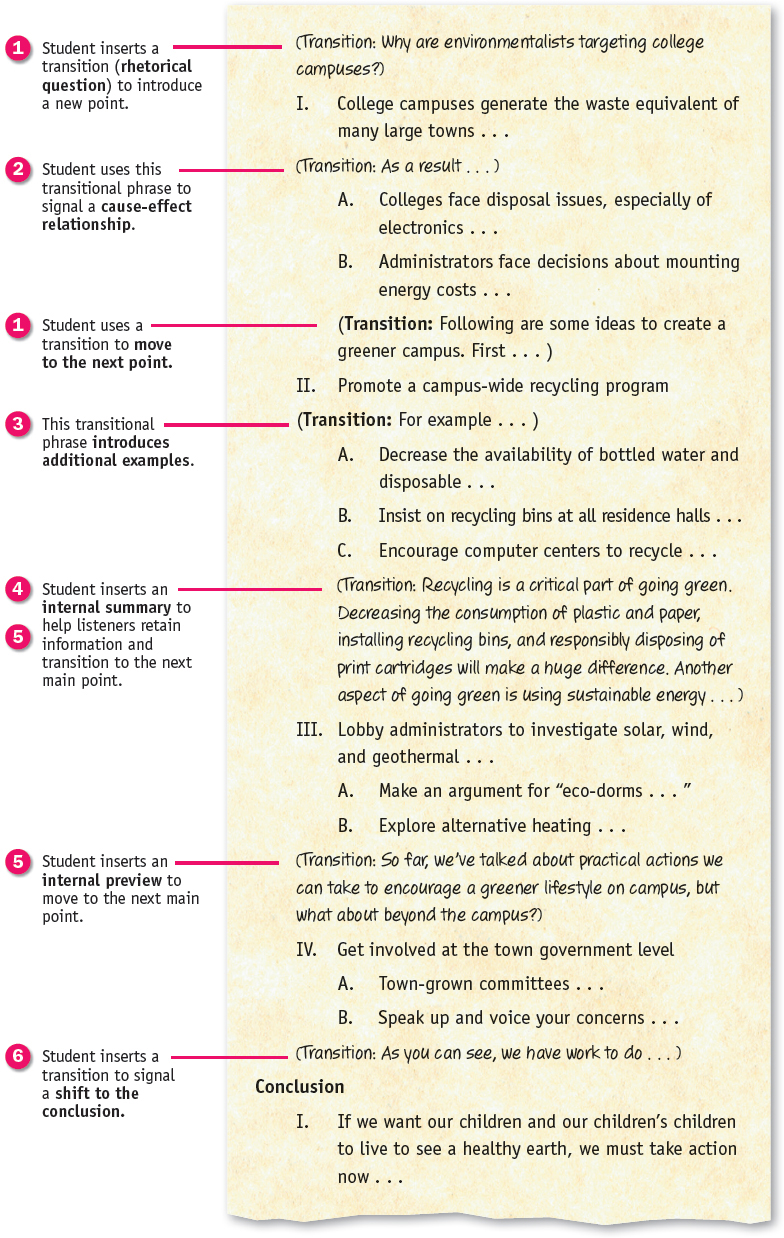FROM POINT TO POINT: Using Transitions to Guide Your Listeners
Using Transitions to Guide Your Listeners
Transitions direct your listeners from one point to another in your speech, leading them forward along a logical path while reinforcing key ideas along the way. At a bare minimum, plan on using transitions to move between:
- The introduction and the body of the speech
- The main points
- The subpoints, whenever appropriate
- The body of the speech and the conclusion

While transitions help guide your listeners from point to point, they can also do a lot more, including:
- Introduce main points
- Illustrate cause and effect
- Signal explanations and examples
- Emphasize, repeat, compare, or contrast ideas
- Summarize and preview information
- Suggest conclusions from evidence
Following is an excerpt from a working outline on a speech about campuses going green. Note how the student edits himself to ensure that he (1) uses transitions to help listeners follow along and retain his speech points and (2) uses transitions strategically to achieve his goal of persuading the audience.

[Leave] [Close]